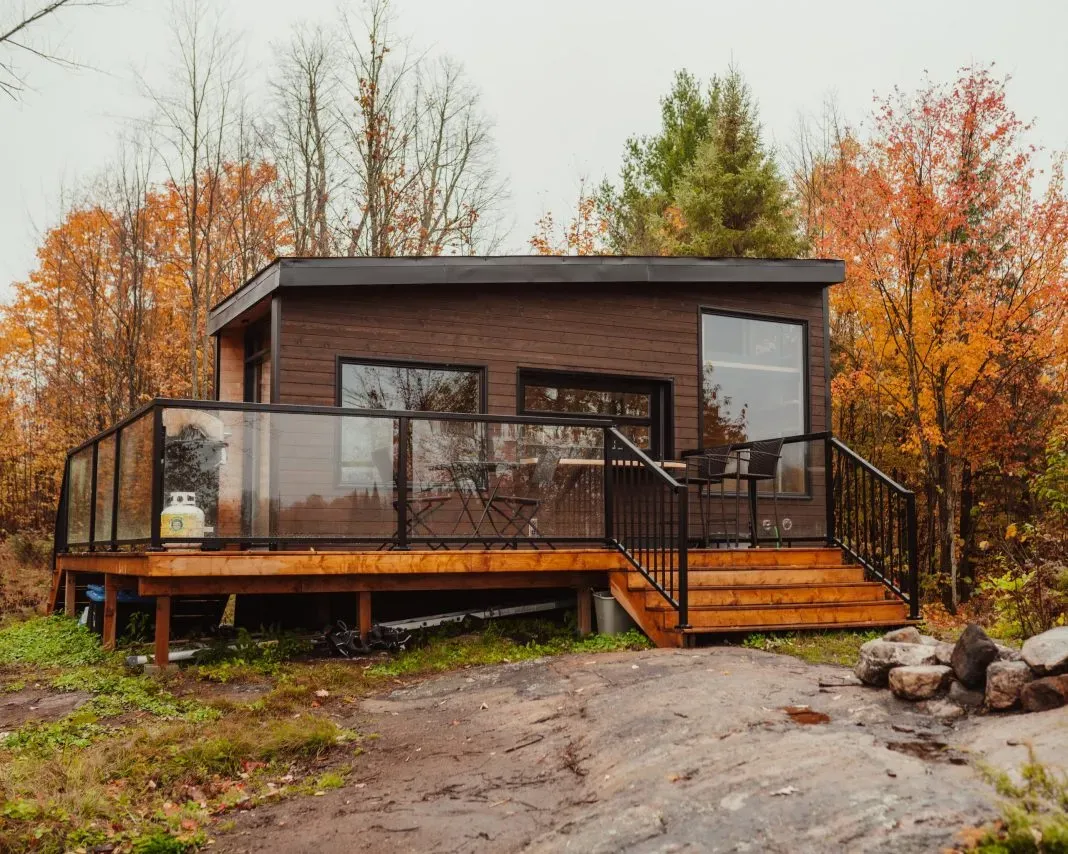New initiative brings sustainable and affordable housing with Lanark County tiny homes
PERTH — As part of its ongoing response to the housing crisis, two innovative Lanark County tiny homes will soon be introduced while the county stays true to its climate action commitments.
The Lanark County tiny homes, which are both net-zero and carbon-negative, are part of the Cabinscape Sinkhouse Pilot Project and are expected to join the county’s housing stock in the near future.
John Loerchner, CEO of Cabinscape, confirmed that the Lanark County tiny homes are already built and waiting for site development and permits.
“The units are built and sitting in our factory. We still have to do site development and we’re just waiting on the permits,”
John Loerchner, chief executive officer of Cabinscape.
The initiative received $469,250 in funding from the Federation of Canadian Municipalities’ Green Municipal Fund in 2022, representing 80 per cent of the cost. The county will cover the balance out of reserves.
“The homes will be placed on land owned by the Lanark County Housing Corporation in the Town of Perth,” said Emily Hollington, the county’s director of social services. “They’re factory-built, then transported and installed on-site. They may serve as long-term transitional or permanent housing, though those details are still being finalized.”
Created by Ontario-based Cabinscape, the Lanark County tiny homes are built with both sustainability and affordability in mind. Each unit will sit on a deformation-resistant foundation, essentially a packed gravel pad and blocks, with the structure anchored to the ground.
While the units are solar-powered, they will also be connected to standard hydro, water, and sanitary services. Their modular design allows them to be relocated if needed.
“The engineering ensures the homes produce as much energy as they consume over the course of a year,” Loerchner explained. “At times, they’ll generate surplus power that flows back into the grid; at others, they’ll draw from it, resulting in net-zero energy usage.”
Because the grant is a pilot under the FCM’s Green Municipal Fund, Cabinscape will be involved in monitoring the homes’ energy use during the first year of occupancy, Hollington added.
Loerchner, who has also launched a second company, Wildscape, to market sustainable tiny homes, hopes the project becomes a model for affordable housing. His goal is to reduce costs to about $150,000 per unit, or lower, particularly through row housing designs that share infrastructure and improve efficiency.
Each tiny home is designed to house one individual, Hollington said. While not fully barrier-free, the homes do include some accessible features.
“There’s a step at the entrance, which could be modified into a ramp,” she said. “There are no stairs inside, and while the space is compact, it could accommodate a healthy, active senior. However, due to size constraints, they wouldn’t meet full accessibility standards for those using wheelchairs or walkers.”
Loerchner noted the company has now developed barrier-free designs for seniors and residents with mobility challenges.
“Depending on finishes, barrier-free units may have some minor additional costs,” he said.
Cabinscape has been building off-grid cabins for short-term rentals for nearly a decade. But as housing affordability worsened across Canada, Loerchner recognized a new purpose for the company’s expertise.
“Our tiny homes have always been about sustainable living, but it became clear that we could apply these same principles to long-term, affordable housing,” he said.
With housing affordability top of mind in many communities, Lanark County’s pilot could serve as a blueprint for municipalities looking to integrate climate action with social policy.
Stay up to date—Read the latest Lanark County news.




